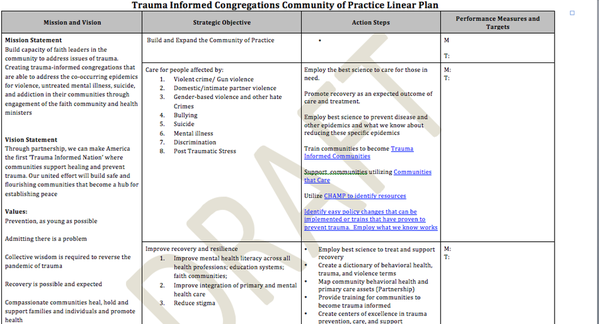Here's the draft version of the Trauma-Informed Congregations Community of Practice Linear Plan that Kimberly put together. You obviously can't read this screen-grab image, so open the document (the pdf is below), and add your feedback in the comments section below.



Comments (4)